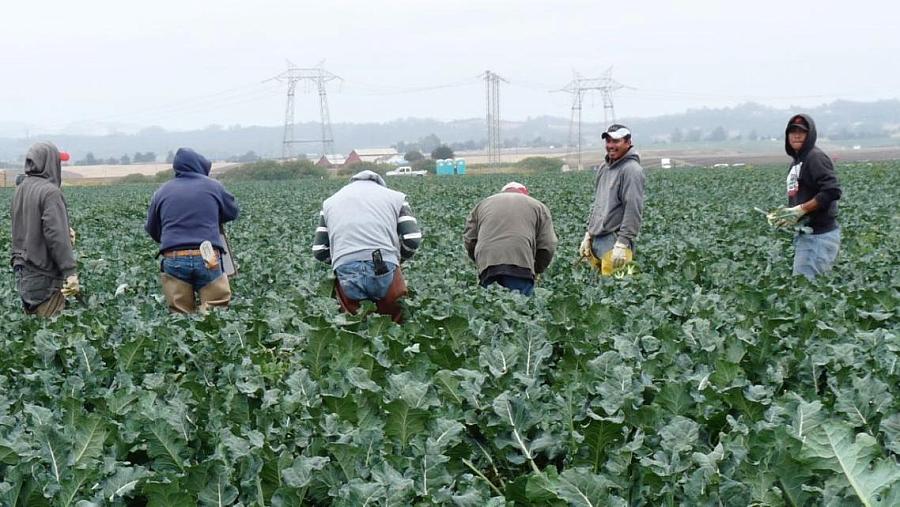How can we better protect farmworkers as the planet warms?

Workers harvest cauliflower in California's Salinas Valley.
PAC55 via Creative Commons
Emergency cooling stations opened across the Pacific Northwest two summers ago during an unprecedented heat wave as people without air conditioners sought relief. A 38-year-old farmworker from Guatemala, like most hired farmhands, did not have that option. He collapsed and died that June at the Oregon nursery where he worked, as temperatures reached 105 degrees.
Agricultural workers are most at risk from the health impacts of extreme heat, studies show. They’re 35 times more likely to die of heat-related illness than other workers, a disproportionate risk that is likely to get worse as the planet warms. Climate change will also increase their chances of working alongside more dangerous, longer-lasting wildfires that release a toxic stew of chemicals in the smoke.
And with heat waves now coinciding with California’s peak wildfire season — between summer and early fall, when the greatest number of workers are in the fields — the men and women who pick the nation’s fruits and vegetables face increasingly dangerous working conditions.
California’s San Joaquin Valley is among the most productive farming regions in the world. It’s also the most polluted air basin in the country. The valley’s surrounding mountain ranges trap toxic air contaminants — caused by emissions from heavy traffic on the region’s major highways, oil and gas production, and agricultural operations — in a hazy layer above the valley floor.
These contaminants include particulate matter and ground level ozone, two of the most widespread and dangerous air pollutants. Both ozone, produced by volatile organic compounds and nitrogen oxides, and particle pollution are associated with an increased risk of low birth weight in newborns, which can cause serious short-term and chronic health problems. Particle pollution can lead to heart attacks, strokes and early death.
Researchers are just starting to understand what’s in wildfire smoke and its toxicity, which varies with what’s burned. But it’s clear that wildfires can also produce ozone and particle pollution, amplifying risks for farmworkers who breathe the valley’s heavily polluted air every day.
Farm work is already one of America’s most dangerous occupations, even on a balmy day under clear skies. Some of the questions I aim to answer with my reporting, supported by the Impact Fund for Reporting on Health Equity and Health Systems, include: How are growers adapting to climate-fueled hazards to keep workers safe? What federal, state and local laws, regulations and policies are in place to ensure that growers provide shade, water and breaks to reduce risks from extreme heat? Are there protocols in place to make sure workers know when working conditions could endanger their health and even their lives? If so, are they in the language that workers who speak English or Spanish as a second language can understand?
Even when there are standards in place, like the heat standard California passed in 2005, they can be difficult to enforce. I will compile documents and data to track what’s been reported to state and federal agencies, including Occupational Health and Safety Administration officials. But those records are likely underestimates of work-related incidents, injuries and fatalities. So, I will combine data from official sources with surveys of workers and community members to try to fill in some of the gaps.
“We have compounding and cascading disasters from extreme storms, flooding, wildfires, heat waves and drought that are all impacting farmworkers,” Michael Méndez, an environmental justice and policy expert at UC Irvine, told the Los Angeles Times recently.
With this project I aim to show how these compounding and cascading disasters are forcing farmworkers to risk their lives to put food on our tables. At the very least, my reporting will raise awareness about the risks they face. Ideally, it will inspire legislators and policymakers to take meaningful action to protect them.

